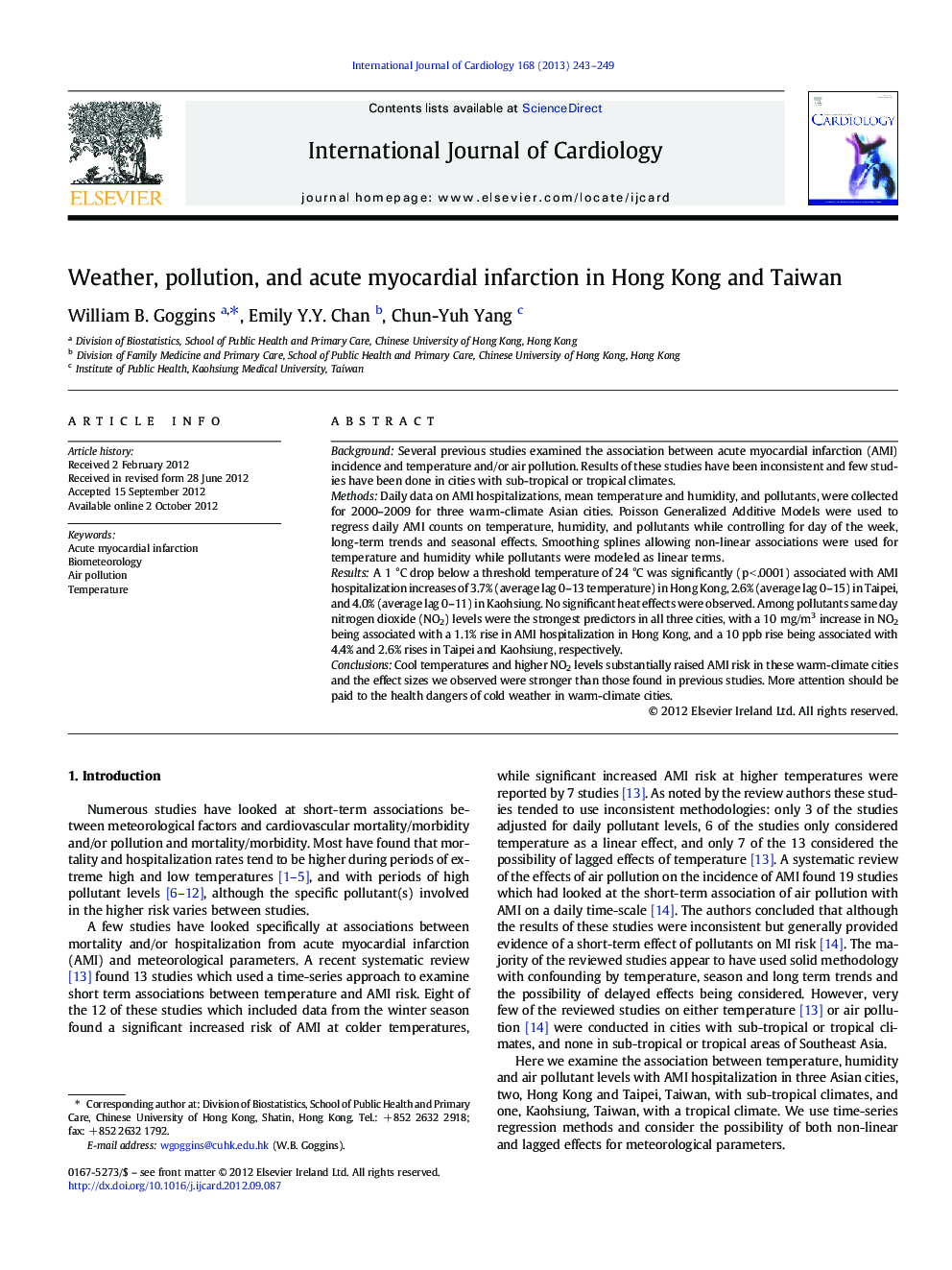| Article ID | Journal | Published Year | Pages | File Type |
|---|---|---|---|---|
| 5976628 | International Journal of Cardiology | 2013 | 7 Pages |
BackgroundSeveral previous studies examined the association between acute myocardial infarction (AMI) incidence and temperature and/or air pollution. Results of these studies have been inconsistent and few studies have been done in cities with sub-tropical or tropical climates.MethodsDaily data on AMI hospitalizations, mean temperature and humidity, and pollutants, were collected for 2000-2009 for three warm-climate Asian cities. Poisson Generalized Additive Models were used to regress daily AMI counts on temperature, humidity, and pollutants while controlling for day of the week, long-term trends and seasonal effects. Smoothing splines allowing non-linear associations were used for temperature and humidity while pollutants were modeled as linear terms.ResultsA 1 °C drop below a threshold temperature of 24 °C was significantly (p < .0001) associated with AMI hospitalization increases of 3.7% (average lag 0-13 temperature) in Hong Kong, 2.6% (average lag 0-15) in Taipei, and 4.0% (average lag 0-11) in Kaohsiung. No significant heat effects were observed. Among pollutants same day nitrogen dioxide (NO2) levels were the strongest predictors in all three cities, with a 10 mg/m3 increase in NO2 being associated with a 1.1% rise in AMI hospitalization in Hong Kong, and a 10 ppb rise being associated with 4.4% and 2.6% rises in Taipei and Kaohsiung, respectively.ConclusionsCool temperatures and higher NO2 levels substantially raised AMI risk in these warm-climate cities and the effect sizes we observed were stronger than those found in previous studies. More attention should be paid to the health dangers of cold weather in warm-climate cities.
